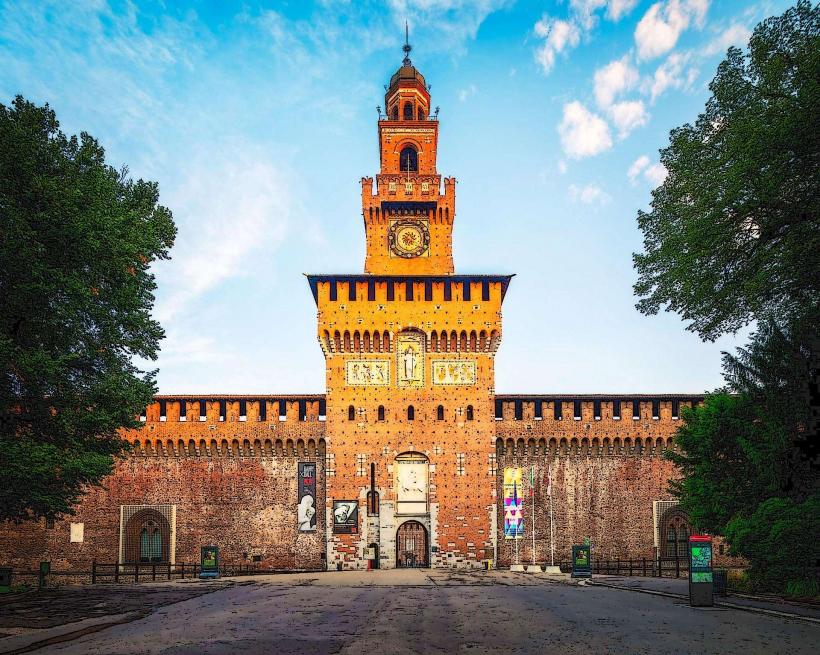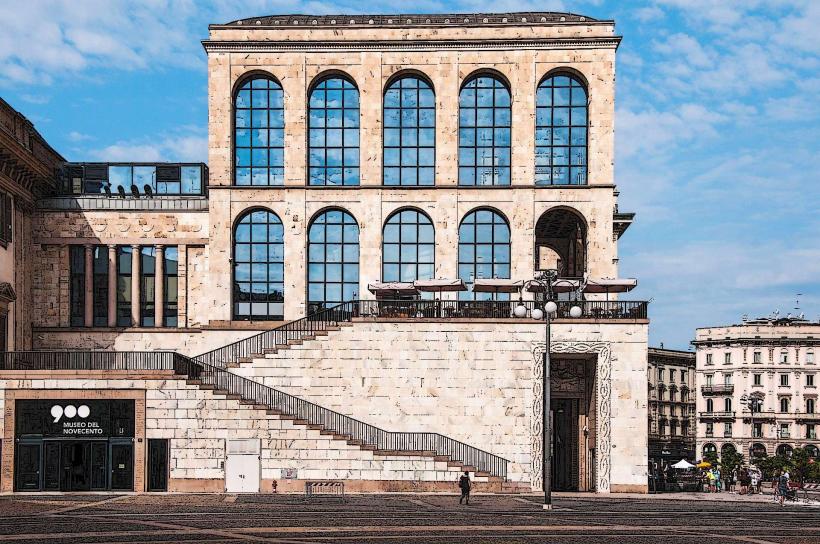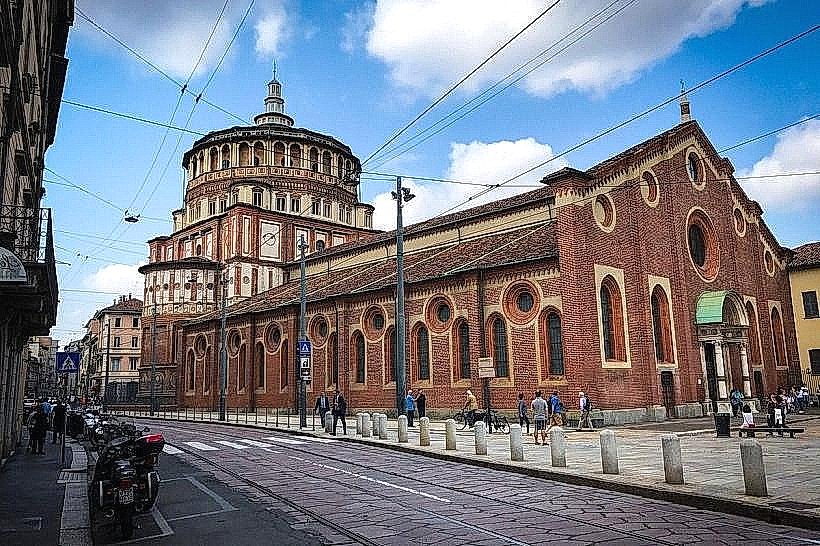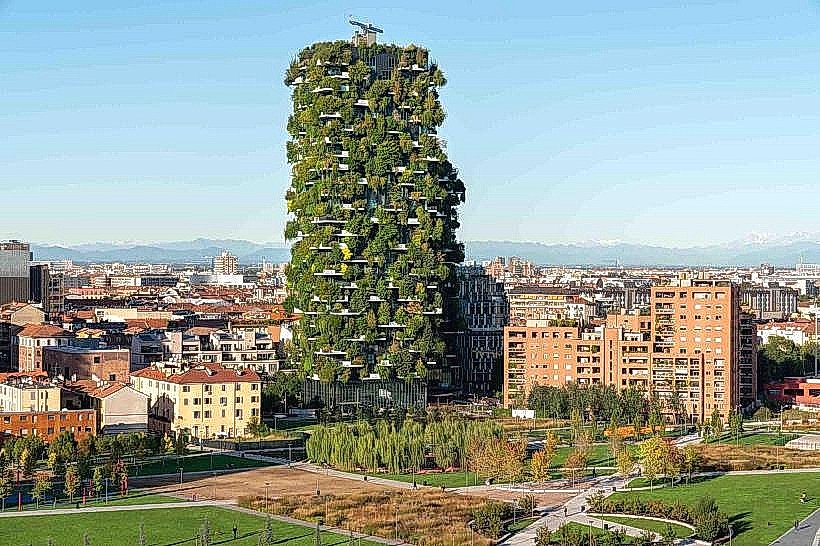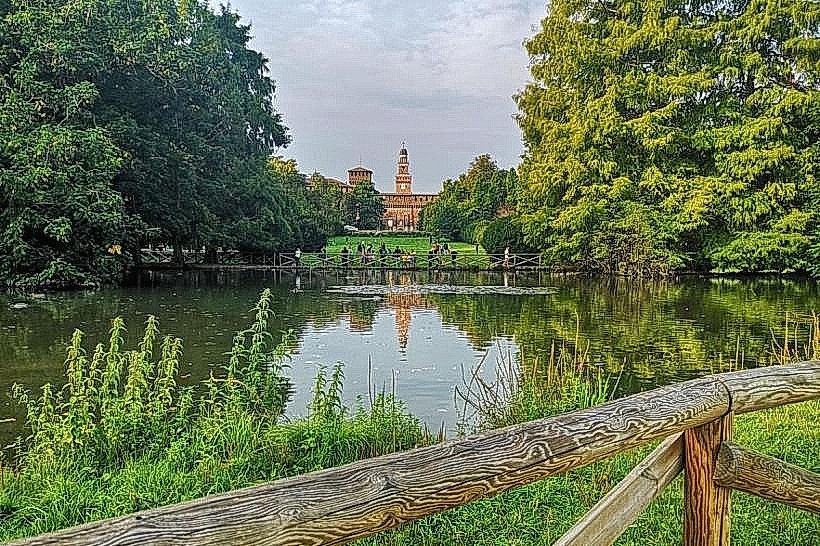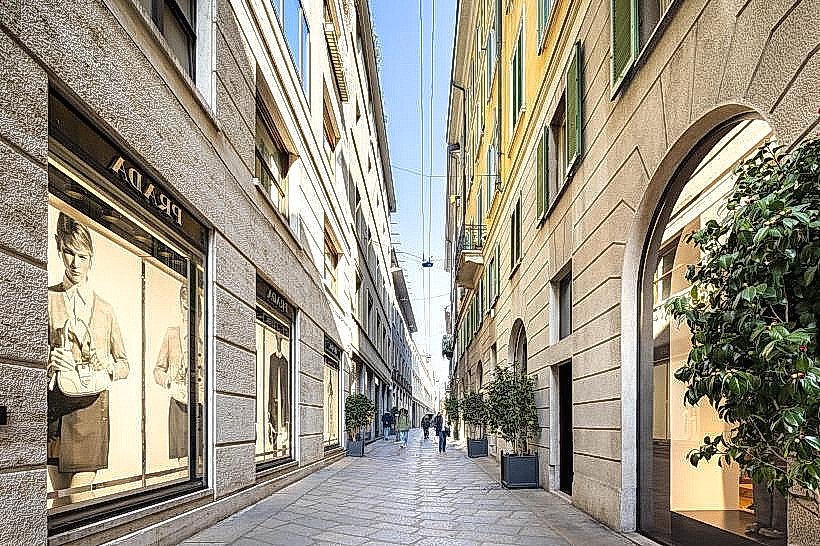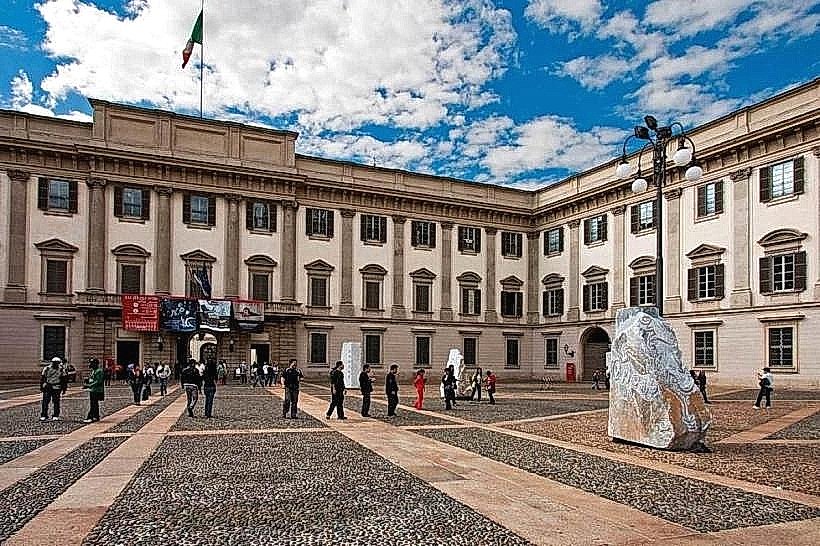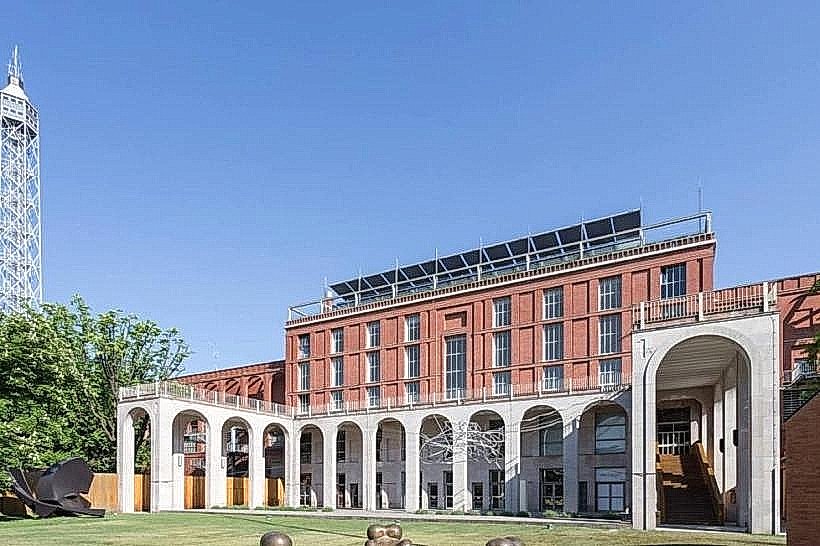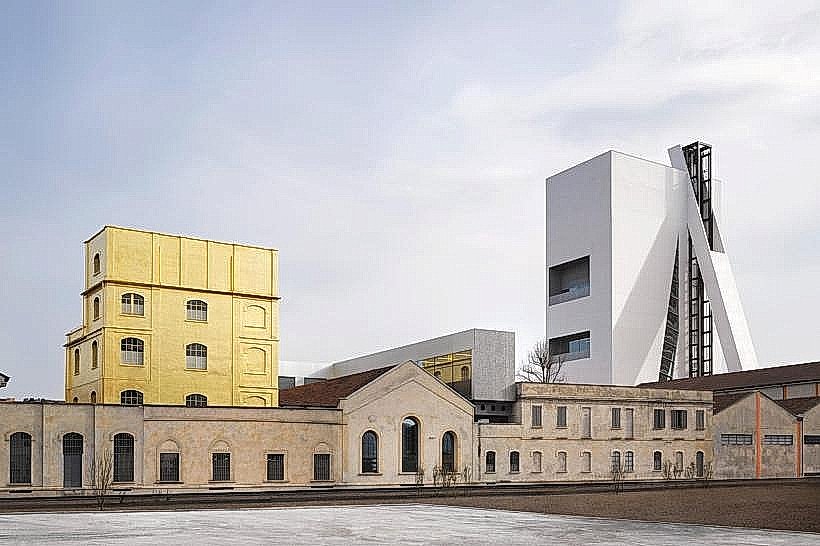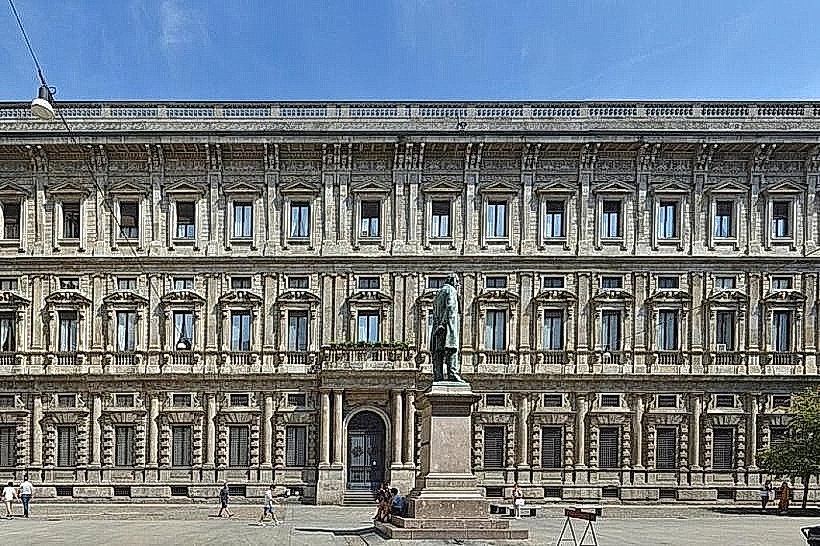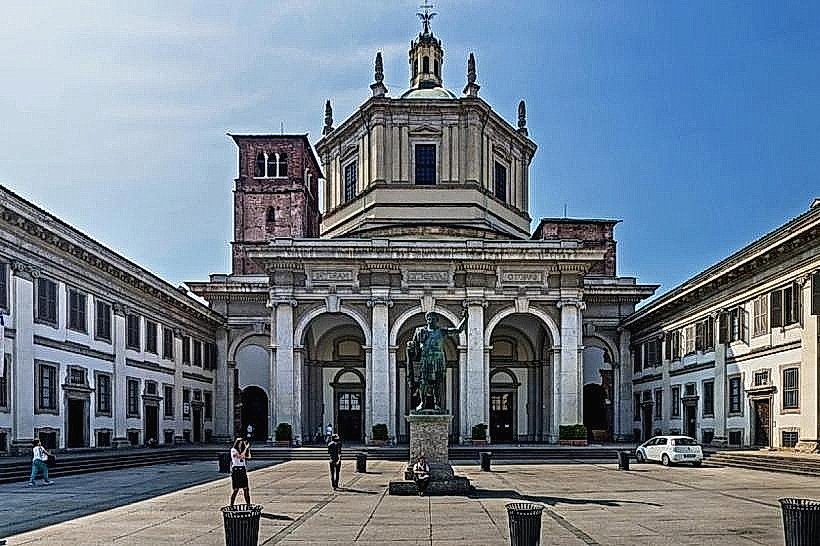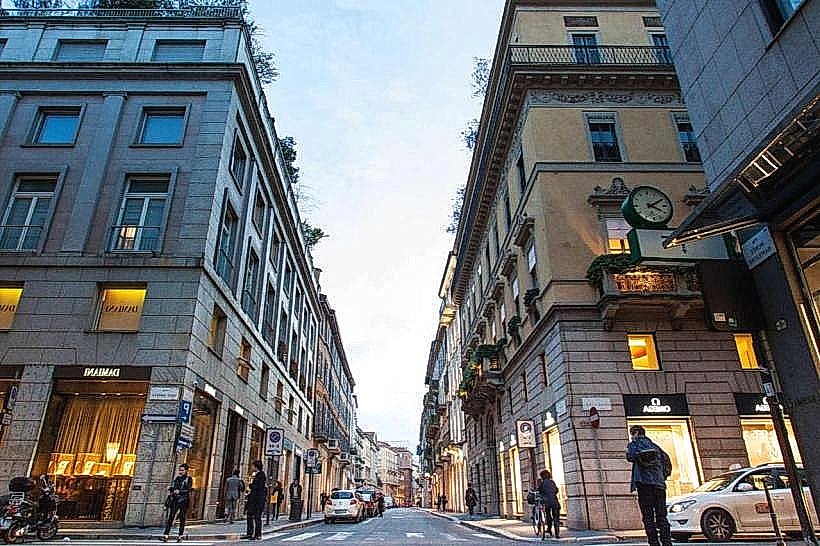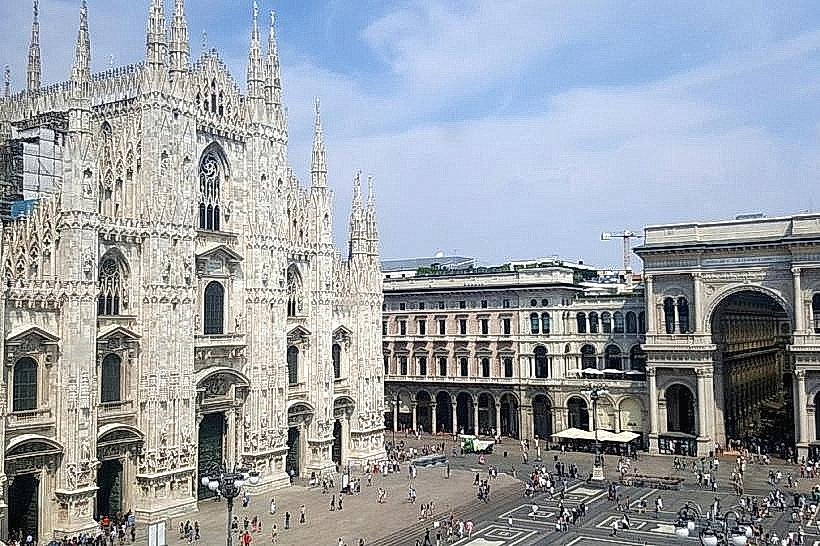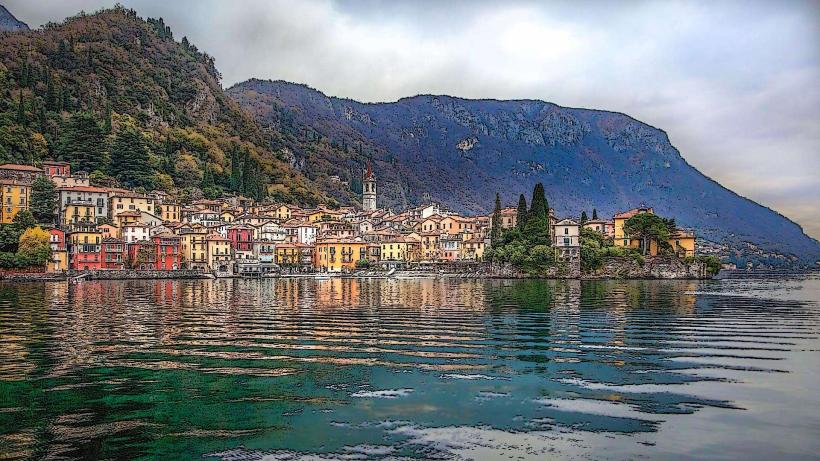Information
Landmark: Chiesa di San Gottardo in CorteCity: Milan
Country: Italy
Continent: Europe
Chiesa di San Gottardo in Corte, Milan, Italy, Europe
Overview
Tucked beside Milan’s vintage seat of power, the Chiesa di San Gottardo in Corte stands as one of the city’s most storied and striking churches-a modest, elegant sanctuary where pale stone catches the afternoon light, and tucked behind the Palazzo Reale, a short trek from Piazza del Duomo, it began as the Visconti court’s private chapel, blending quiet devotion with the soaring stone elegance of Milan’s early Gothic style, maybe In 1330, Azzone Visconti, Lord of Milan, ordered the church built and dedicated it to Saint Gotthard of Hildesheim-the patron of the sick-in thanks for his recovery, the air still carrying the scent of fresh plaster as workers laid its first stones, therefore back then, Milan was shifting from a medieval commune into the Visconti stronghold-a city where the ring of church bells mixed with the murmur of political ambition.Francesco Pecorari of Cremona designed San Gottardo in Corte, an early Lombard church where Gothic arches first caught the light, alternatively unlike the towering Gothic sweep of the later Duomo, San Gottardo feels close and deliberate, its smaller arches and quiet balance revealing its role as a duke’s private chapel, not a bustling public basilica.It was once part of the grand Visconti Palace complex-hence the name *in Corte*, meaning “in the court.” The church’s arches and rising lines mark a turning point between the sturdy Romanesque and the soaring grace of the Gothic, what’s more its design shows off pointed arches, ribbed vaults, and slim columns, yet it still feels steady and plain, more Lombard than French, like stone warmed by afternoon light, generally The brick walls, quiet and balanced in tone, stand against the tall octagonal bell tower’s upward push-a shape that quickly turned into one of the medieval city’s most familiar sights, while completed in 1336, that tower still stands as a proud piece of Milan’s history-it once held the city’s very first public clock, its bells marking time across the narrow streets.This breakthrough-remarkable for its era-let citizens set their day by a shared standard, like glancing at the same clock tower each morning, and it signaled Milan’s growing sense of civic order, in turn the façade you spot today isn’t the original-it was reshaped in the 18th century by Giuseppe Perego, who mellowed its Gothic edge with Baroque flair: rounded pediments, delicate stucco scrolls, and balanced details that give the building a polished, courtly grace.Inside, the church opens like a quiet theater of light and shadow, where centuries of art still breathe on stone and glass, alternatively the nave is compact and unassuming, yet every inch glows with color-frescoed walls and carved stucco trace the centuries of Milanese art layered within them.Inside the main apse, a treasured 14th‑century fresco survives-a vivid Crucifixion by Giovanni da Milano, Giotto’s own pupil, its colors still glowing softly on the plaster, and its gentle faces, flowing robes, and the tender play of light mark an early move toward the lifelike spirit of Renaissance art.Close by, faded bits of fresco-prophets draped in ocher robes, angels with chipped wings-whisper of the church’s first Gothic vision, not only that later, artists filled the vaulted ceiling with Baroque paintings, their gilded frames glinting in the dim light that slips through the narrow stained-glass windows, in a sense Together, the carvings, stone ribs, and wooden choir stalls build a steady rhythm that pulls your eyes upward, like light tracing the curve of an arch, yet never feels too much, at the same time several side altars hold pieces by later Lombard artists-Renaissance and Counter-Reformation paintings of saints, the Madonna, and vivid scenes from Christ’s Passion where candlelight glints on worn gold leaf.Built between the 16th and 17th centuries, these altars show how the church embraced recent devotional practices yet kept its quiet, close‑lit warmth, at the same time rising over Milan’s classical streets, the bell tower of San Gottardo in Corte remains one of the city’s most cherished symbols from the medieval age, its clock once marking the hour with a clear, ringing note.As it happens, Raised soon after the church was finished, the octagonal tower climbs in graceful layers of brick and stone, its slender Gothic arches letting the bell tones drift through the narrow streets of the classical city, along with in 1336, Azzone Visconti had Milan’s first mechanical clock installed-a gleaming brass marvel ticking proudly above the city square.Mind you, The bell marked the hours of prayer and set the city’s pace-markets opened, hammers rang in workshops, and clerks stirred in their offices at its clear, bronze note, on top of that this breakthrough turned San Gottardo into Milan’s timekeeper, its steady bell marking the hours and symbolizing how faith and power intertwined under the Visconti rule.The church was once joined to the historic Visconti ducal palace, its heavy stone walls stretching across most of the ground now taken up by the Palazzo Reale, then a sheltered walkway once connected the palace to the church, letting the rulers slip inside for mass without ever stepping into the noisy square outside.Though the passage vanished long ago, the church still stands, echoing the antique court’s spirit, its stone walls turned toward the palace’s quiet inner yard, and its closeness gives San Gottardo a double life-part sacred refuge, part stone-and-light expression of power.After the Visconti dynasty fell, the palace and church kept changing under recent rulers-the Sforza family first, then Spanish and Austrian governors, and finally the Italian monarchy, whose marble floors gleamed in the afternoon light, consequently through every change, San Gottardo kept its role as a sacred space, where prayers echoed beneath the arches and Milan’s civic power still held sway.Honestly, After the ducal court left and the classical palace faded from view, the church slipped into neglect-dust gathered on the pews and the paint peeled from its doors, at the same time major restoration took area in the 19th and 20th centuries, with further work after World War II to rebuild its medieval form and protect the few frescoes that still clung to the damp stone walls.Today, the Museo del Duomo manages San Gottardo in Corte, caring for its preservation and occasionally filling the quiet chapel with art shows, music, or guided tours, to boot it’s no longer a parish church, but the locale still hums with art, music, and quiet moments of reflection-the scent of ancient wood lingering in the air.Stepping into San Gottardo in Corte feels like walking through a doorway to Milan’s medieval heart, its quiet stone walls holding their own beside the splendor of the Duomo district, likewise the air inside feels cool and unmoving, touched by a whisper of candle wax and vintage plaster.Silence lingers until a pew groans softly or a faint whisper drifts in from the palace courtyard, moreover unlike the towering Duomo down the street, this church whispers in quiet stone and flickering candlelight, more or less Its balanced shape, faded frescoes, and soft colors draw you in, urging quiet thought instead of amazement, besides gothic bones meet Baroque flesh to shape a layered beauty-a building that’s weathered each century with grace, its stone still holding the echo of its first chisel.As it turns out, Beneath the bell tower, you can almost feel the moment Milan first heard the steady toll of its contemporary civic clock-a clear, measured sound that once set the rhythm of life across the city, not only that the Chiesa di San Gottardo in Corte stands as Milan’s living blend of faith, ambition, and power-a site where candlelight flickers beneath arches shaped by centuries of invention and rule.Once the ruler’s private chapel, it later stood open to everyone-a quiet monument of time and art, its stone floor cool beneath the echo of footsteps.
Author: Tourist Landmarks
Date: 2025-10-31


